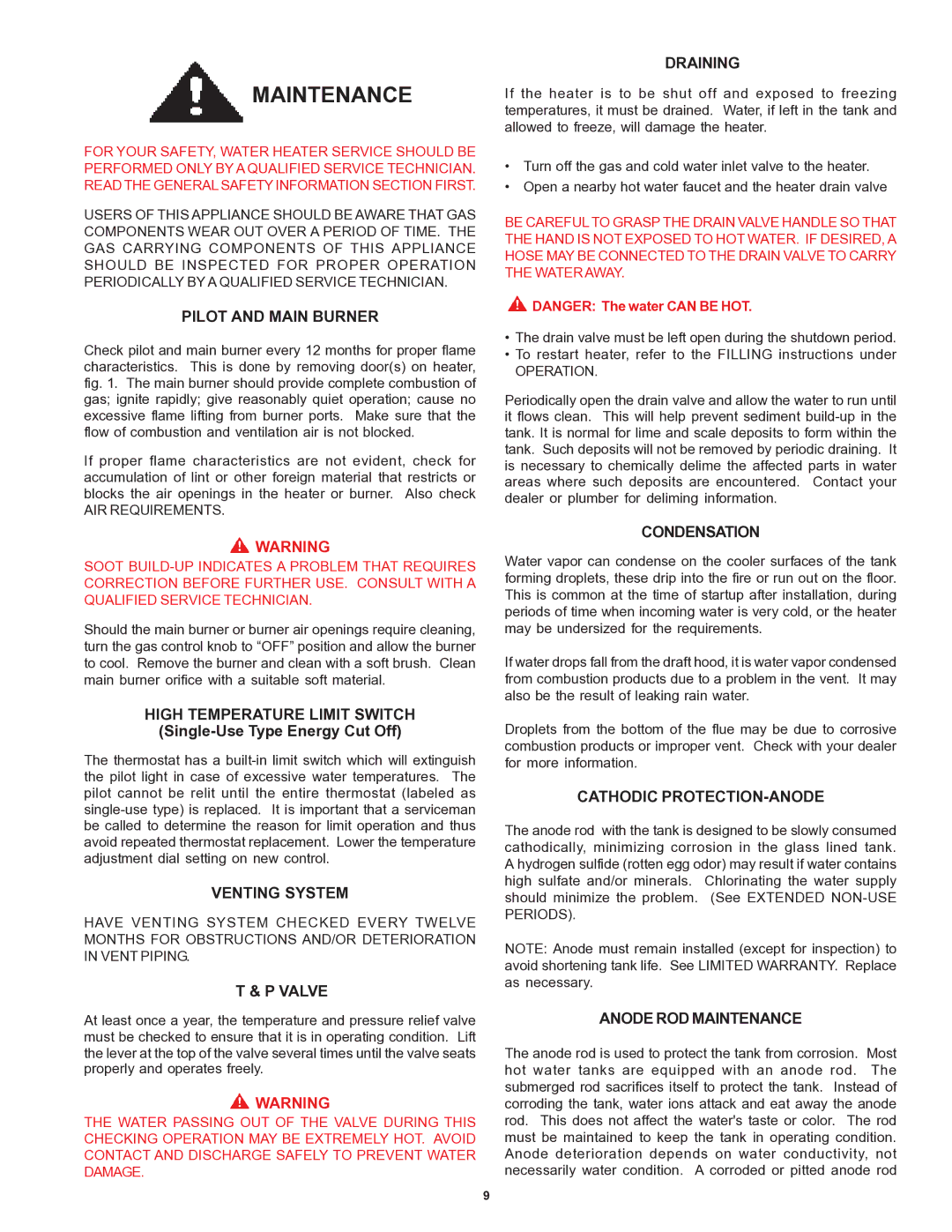184769-000 specifications
A.O. Smith 184769-000 is a notable water heater model that epitomizes efficiency and reliability in the realm of home appliances. As part of A.O. Smith’s comprehensive line of water heating solutions, this product showcases cutting-edge technologies and features that cater to contemporary household demands.One of the standout characteristics of the A.O. Smith 184769-000 is its impressive energy efficiency. It is designed to minimize energy consumption while maximizing performance. The unit utilizes advanced insulation technology that reduces heat loss, ensuring that the water maintains its temperature even when the heater is not in active use. This feature not only contributes to lower energy bills but also promotes sustainability by reducing the carbon footprint associated with energy production.
The A.O. Smith 184769-000 incorporates high-quality components that guarantee long-lasting durability. The tank is crafted from robust materials that resist rust and corrosion, extending the life of the appliance. Coupled with the manufacturer’s industry-leading warranty, homeowners can enjoy peace of mind with the knowledge that they are investing in a product built to last.
In terms of capacity, this model offers various sizes to suit the needs of different households, whether for small families or larger homes. The water heater provides sufficient hot water supply to meet daily needs, from showering and cooking to laundry and dishwashing.
Another significant feature of the A.O. Smith 184769-000 is its intuitive digital interface. Users can easily adjust settings, monitor performance, and receive alerts for maintenance or issues through this user-friendly display. This technology allows for better control over the heating process, ensuring that households can enjoy hot water when they need it most.
The safety features integrated into the A.O. Smith 184769-000 are also commendable. It includes sophisticated over-temperature protection and a pressure relief valve, safeguarding the unit's operation and preventing potential hazards.
In summary, the A.O. Smith 184769-000 stands out for its energy efficiency, durable construction, user-friendly digital controls, and robust safety features. These characteristics make it a reliable choice for any homeowner looking to enhance their hot water supply system. Whether upgrading an existing unit or installing a new water heater, this model is engineered to meet and exceed expectations.
 MAINTENANCE
MAINTENANCE